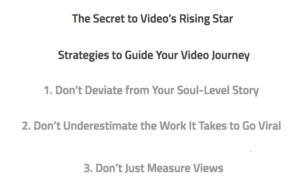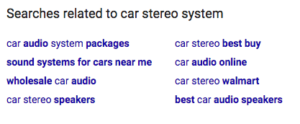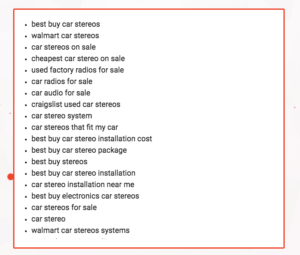SEO Essentials for Every Long-Form Blog Post
-
Keyword research
Take the time to search out the simplest focus keyword for your post. confirm it’s specific to your topic, and take into account going for a lower competition keyword.
Google Keyword Planner and SEMrush are each nice for this. Here’s however you’ll use Keyword Planner to its fullest.
2. Use long-tail keywords
Everyone is aware of that a commentary ought to embrace attention keyword.
But not enough sites are mistreatment long-tail keywords.
Long-tail keywords are––you guessed it––long keywords that get super specific. They’re usually easier to rank for, and that they bring you targeted traffic.
Here’s an example from HubSpot:

Having hassle finding the proper long-tail keywords? strive mistreatment Google’s “searches connected to” section.

3. Create the perfect H1 tag
In most cases, your title (or h1) tag goes to be the primary issue somebody sees once they begin reading your journal post.
For journal posts, the h1 is that the title of your journal post.

The right h1 tag will create one euphemism of a distinction.
Don’t believe me? once I modified the h1 of 1 of my articles, I got eighty-fifth a lot of organic traffic in exactly three days.
Now I do know what you’re thinking. If the h1 tag is simply the title of the post, then isn’t writing the particular title a lot of important?
That’s a reasonably common thought. however specializing in the h1 tag is really a lot of vital.
That’s as a result of your h1 tag can facilitate search engines determine and index your content higher, which is able to facilitate human users notice your content simply.
Your h1 tag ought to have the following:
- Include a long-tail keyword
- Be short (20-70 characters)
- Give the user a transparent plan of what the article is concerning
Here’s an example:

4. Use helpful sub headings
Before I am going from now on, I would like to mention one thing.
Do not go keyword crazy along with your subheadings!
If search engines see your focus keyword plastered in each spot obtainable, they’ll classify it as keyword stuffing.
Instead, your sub headings ought to facilitate readers navigate the content.
Use subheadings to interrupt up your article into easy-to-understand chunks.
Look at this text from Convince and Convert:

That’s the h1. currently, let’s explore the subheadings (usually h2 or h3):

See however these split the article? you’ll be able to get an honest plan of the complete article simply by reading the subheadings. (But you don’t get the entire image.)
Brian Dean recommends as well as edges in your subheadings. Here’s associate degree example from Copyblogger:

To add it up, create sub headings that facilitate users move through the content, and ensure some sub headings embrace edges.
5. Share your content with influencers to get backlinks
This is an awesome strategy that I’ve written concerning before.
If you’ll be able to grab the eye of influencers, you’ll doubtless get a pleasant backlink from them, which will, in turn, drive a large amount a lot of traffic to your web site.
The most vital half is obtaining your pitch right. You can’t be too aggressive, however, you would like to urge your foot within the door.
Here’s a templet you’ll be able to use for this:

Source: Quicksprout.com
The goal is to urge backlinks, whether or not that’s a share on social media networks or a link in a very diary post.
But don’t come back right out and enkindle a backlink. If the influencer likes your content, he or she is going to provide you with the backlink you would like.
6. Optimize your URL
Shorter and cleaner URLs provide a better user experience and help search engines too.
This is the kind of URL I’m talking about:

Compare that to this messier URL:

You also want to make sure your URL contains your keyword (focus or long-tail).
7. Include internal links
Internal links are even as vital as outward links. you would possibly be stunned to listen to it’s one among the foremost unmarked components of on-page SEO.
Again, don’t do it. you ought to link to your own website a lot of but you link to different sites.
Aim for regarding 2-4 internal links in each post
8. Use LSI Keywords tools for SEO
Latent linguistics classification (LSI) may be a fancy term, however, it simply refers to keywords that are like your focus keyword.
For example, if your focus keyword is “car stereophonic system,” some LSI keywords would be “car stereo speakers” and “best automobile audio speakers.”
Remember in purpose #1 once I mentioned Google’s “searches connected to” section? Those keywords are usually each long-tail and LSI.

But there’s an even easier way to find these: LSIGraph.com.

Enter your focus keyword, solve the Captcha, and you’ll see a list of LSI keywords:

9. Use your focus keyword early on
First, Brian Dean says your keyword ought to seem within the initial 100-150 words. In my expertise, this is often fully necessary.
This will facilitate Google crawl your content and perceive that your focus keyword is vital
10. Create a SEO-friendly meta description
Making a diary post mobile friendly isn’t almost about victimisation responsive style. That’s a decent begin, however, it isn’t enough.
You also need to place confidence in however your article itself can show on mobile.
First, check that your content uses short sentences and paragraphs. (Aim for paragraphs of no over 3-4 sentences.)
This will provide your article the simplest readability on mobile:


















